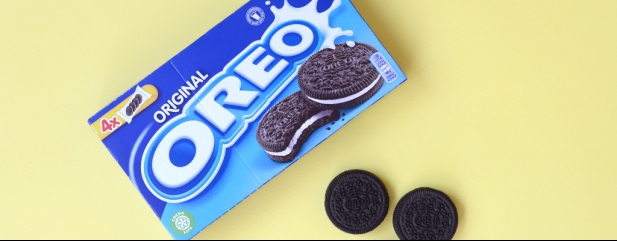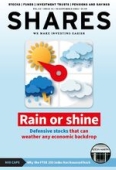Archived article
Please note that tax, investment, pension and ISA rules can change and the information and any views contained in this article may now be inaccurate.
Why smart cookies should invest in Oreo maker Mondelez

Risk-averse investors concerned about a global recession should seek out high-quality compounders that can continue to grow sales and earnings during tougher economic times.
One such name is Mondelez International (MDLZ:NASDAQ), the snacking giant with strong market positions in chocolate, sugar, and gum confectionery as well as sweet and savoury biscuits known for iconic brands including Oreo, Cadbury Dairy Milk and Ritz crackers.
While Mondelez’s products are not completely immune from the threat of downtrading, its brands are demonstrably resilient and enjoy high levels of loyalty from consumers who should continue to spend on tasty snacks that provide a bit of succour during straitened economic times.
RECIPE FOR SUCCESS
Separated from Kraft Foods a decade ago in 2012, Mondelez is one of the world’s biggest snack companies with products sold in over 150 countries. The $86.65 billion cap holds the number one global position in biscuits (cookies and crackers), is the world’s number two player in chocolate, and is also growing rapidly in the highly fragmented baked snacks market.
Arguably best known for Oreo, the world’s top selling cookie, Mondelez’s enviable portfolio of brands also includes the likes of Trident gum, belVita breakfast biscuits, Milka and Toblerone chocolate, Sour Patch Kids sweets and recently acquired brands Clif Bar and Chipita.
Guided by CEO and chairman Dirk Van de Put and finance director Luca Zaramella, Mondelez offers a play on the growing global trend of snacking.
Despite already bestriding the biscuits and chocolate worlds like a colossus, Mondelez’s brands still boast scope for growth around the globe, notably in emerging markets, with Oreo in big demand in nations such as India, for example.
A veritable free cash flow monster, Mondelez continues to return copious amounts of capital to shareholders through dividends and share buybacks, with a bumper $3.3 billion returned year-to-date.
MONDELEZ HAS MOMENTUM
Third quarter results (1 November) were better than expected, with organic growth of 12.1% coming in comfortably ahead of the 8.2% forecast, with pricing up 11.4% and volumes confounding expectation of a modest decline by coming in 0.7% higher. Raising prices without shedding volume clearly demonstrates that Mondelez has both brand strength and pricing power.
Mondelez also raised both its full year organic sales and earnings per share growth guidance to 10%-plus. And while the company faces elevated commodity and other costs, investment bank Berenberg insists the sales outlook is supported by ‘pricing, resilient volumes from robust biscuits and chocolate category demand, and improving retailer service levels in North America’.
Earnings per share growth should be underpinned by margin upside from operating leverage as the company passes on cost inflation to consumers, as well as further share buybacks and bolt-on acquisitions enabled by over $3 billion of annual free cash flow generation, which allows the company to support a high leverage ratio of three times net debt to EBITDA (earnings before interest, tax, depreciation and amortisation).
Berenberg argues the Chicago-based company is ‘one of the more reliable compounders’ in its sector. Mondelez’s 4%-plus organic growth levels, says the broker, should support a higher multiple than the current 20 times forecast earnings on which Mondelez trades for 2023, with top-quartile peers trading on 22 to 24 times earnings.
For the years to December 2023 and 2024, Berenberg forecasts a rise in earnings per share from $2.93 for 2022 to $3.12 and $3.40 respectively as sales grow from $31.3 billion in the current year to $32.5 billion next, to the best part of $33.9 billion in 2024. Twice covered by earnings, Mondelez’s dividend is estimated to rise from $1.47 this year to $1.50 next year, and $1.63 thereafter.
Important information:
These articles are provided by Shares magazine which is published by AJ Bell Media, a part of AJ Bell. Shares is not written by AJ Bell.
Shares is provided for your general information and use and is not a personal recommendation to invest. It is not intended to be relied upon by you in making or not making any investment decisions. The investments referred to in these articles will not be suitable for all investors. If in doubt please seek appropriate independent financial advice.
Investors acting on the information in these articles do so at their own risk and AJ Bell Media and its staff do not accept liability for losses suffered by investors as a result of their investment decisions.
Issue contents
Feature
Great Ideas
News
- Mid-cap stocks reverse losing streak versus FTSE 100
- Why retail investors in JPMorgan Russian Securities are sounding the alarm on changes
- Veterinary group CVS plans to double profitability over the next five years
- Falling house prices and higher sales cancellations: why property market-related shares are down again
- Chinese stocks surge on prospect of end to strict Covid measures
- Hasbro hurt as toy demand drops following price hikes
- Strong customer demand puts Caterpillar shares 10% ahead on the year

 magazine
magazine








